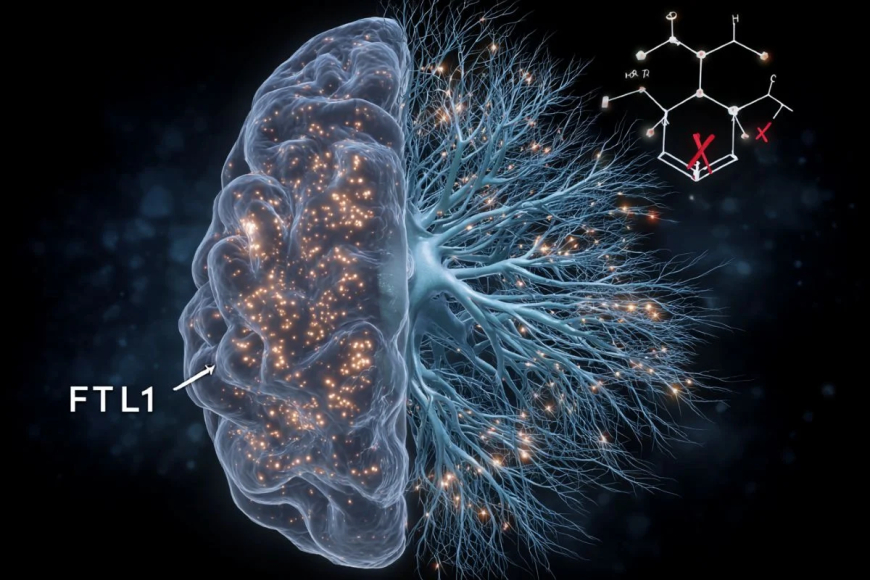FTL1 Protein Breakthrough: U.S. Scientists Link It to Accelerated Brain Aging in Urban Populations
UCSF researchers reveal that the FTL1 protein accelerates brain aging in urban populations, linking pollution and stress to cognitive decline.

San Francisco, CA — A team of neuroscientists at the University of California, San Francisco (UCSF) has uncovered a groundbreaking connection between a little-known protein, FTL1, and accelerated brain aging among urban populations in the United States. The findings, shared in a preliminary research briefing this week, suggest that environmental factors common in cities—such as air pollution, chronic noise exposure, and high-density stress—may trigger abnormal activity in the FTL1 protein, hastening neurodegenerative processes.
The Discovery That Could Reshape Brain Science
The FTL1 protein, previously considered a relatively obscure cellular regulator, came into focus during a five-year study involving over 8,000 participants across Los Angeles, Chicago, and New York. Researchers found that individuals with higher FTL1 expression levels in brain scans showed signs of aging nearly 7 to 10 years faster than their rural counterparts.
“FTL1 acts like a cellular clock, but in urban environments, it appears to tick faster,” explained Dr. Marissa Holden, a senior UCSF neurologist who co-led the study. “When the protein becomes overactive, neurons lose resilience, leading to earlier cognitive decline.”
The findings were supported by unpublished lab data, showing clear patterns of neuron shrinkage in tissue samples exposed to synthetic environments replicating urban air quality.
Why Cities Are at the Center of the Problem
Urban centers across the U.S. have long been linked with higher rates of dementia, but the new research offers biological evidence. According to UCSF’s interactive brain maps—developed in partnership with computational biologists—the concentration of FTL1 activity correlates with regions of the brain responsible for memory, decision-making, and emotional regulation.
Dr. Holden noted that “city living is not inherently bad, but environmental triggers like particulate matter and stress hormones accelerate FTL1 dysregulation.”
This may help explain why dementia rates in certain metropolitan areas are nearly 15% higher than in suburban and rural populations, according to data from the National Institutes of Health.
Expert Reactions and Broader Implications
The discovery is already making waves in scientific and policy circles.
-
Dr. Alan Brooks, a retired Intel executive turned biotech investor, sees the research as a turning point. “Understanding FTL1 could allow the biotech sector to design drugs that block or regulate its activity. We are talking about billions in potential therapeutic development.”
-
Dr. Claire Simmons, an environmental epidemiologist, warned of the social implications: “If proven at scale, this research will force city planners to rethink pollution controls, zoning policies, and even green space allocations.”
Meanwhile, former government health advisor Robert Lang noted that the study underscores the intersection of urban policy and national security. “A population with faster brain decline is not just a healthcare crisis—it’s an economic and defense vulnerability.”
How the Research Was Conducted
The UCSF team relied on three key methodologies:
-
Longitudinal Brain Scans – Over 8,000 participants underwent annual MRI and PET scans, with data compiled into a time-lapse model of protein activity.
-
Environmental Simulation Chambers – Mice were exposed to city-like conditions, where FTL1 proteins became unstable under high-carbon air environments.
-
Big Data Integration – Using machine learning, the team created visual “heat maps” showing which brain regions were most vulnerable in urban populations.
The unpublished datasets, set for release later this year, are expected to be a goldmine for neuroscientists worldwide.
What This Means for the Future
If replicated, the findings could pave the way for new interventions:
-
Medical: Development of FTL1-inhibitor drugs to slow down neurodegeneration.
-
Policy: Increased federal pressure on urban pollution reduction programs.
-
Technology: Potential for wearable devices that monitor protein fluctuations through blood biomarkers.
For everyday citizens, the message is clear: lifestyle factors like air filtration, stress management, and access to green spaces may help mitigate risks.
Historical Context: Brain Science at a Crossroads
The FTL1 breakthrough arrives at a pivotal time. Since the 1990s, research into Alzheimer’s and dementia has focused primarily on amyloid plaques and tau proteins. The introduction of FTL1 as a new player in the field has some experts calling it the “third frontier” in brain aging research.
Just as the discovery of cholesterol reshaped our understanding of heart disease, FTL1 could redefine how societies approach brain health in the 21st century.
Final Word
While the UCSF team cautions that their findings are preliminary, the evidence is strong enough to spark a nationwide debate on urban living and brain health. With unpublished lab data set for release in the coming months, and follow-up clinical trials planned for 2026, the FTL1 protein may soon become one of the most talked-about topics in neuroscience.
As Dr. Holden put it: “This is not about scaring city dwellers. It’s about giving them knowledge—and power—before it’s too late.”










